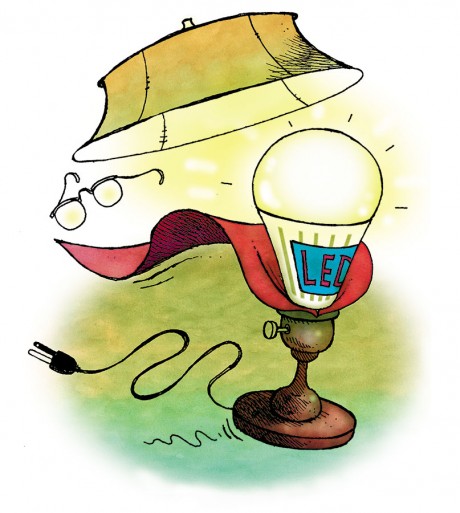6: Switch to efficient lightbulbs
By Diane Veto Parham | Illustrations by David Clark

Cost: A few dollars per bulb.
Benefit: Save about $50 per year by replacing 15 traditional incandescent bulbs with more efficient energy-saving lightbulbs.
DIY potential: You can handle this.
You’re going to change your lightbulbs sooner or later. When you do, why not invest in bulbs that will save energy and create the lighting environment you want in your home?
Since the adoption of new U.S. lighting standards in 2012, manufacturers have replaced traditional incandescent bulbs with technologies that use 25 to 80 percent less energy. Halogen bulbs look pretty much like the old-style incandescents; they’re usually the cheapest options, they’re available in different shapes and colors, and they work with dimmer switches. But they’re also the least energy efficient, and they won’t last as long as CFLs (compact fluorescent bulbs) and LEDs (light-emitting diode bulbs).
LEDs are the most efficient option. They can last 15 to 20 years, and their prices have been dropping, making them more affordable. They also work well with many newer dimmer switches, says Brian Sloboda, program manager for the National Rural Electric Cooperative Association (NRECA).
“There are so many cool things about LEDs — they don’t even have to look like the lightbulbs we’re used to seeing,” he says.
When you’re shopping, pay attention to lumens (the brightness of the bulb) rather than watts, which indicate how much energy it uses. Packaging often refers to the wattage a new bulb can replace—for example, an energy-saving 800-lumen bulb can replace a 60-watt bulb. Look at the lighting-facts label for details about the bulb’s lumens, estimated yearly energy cost and lifespan, and the lighting color. Energy Star-certified bulbs can deliver the brightness you want while using 70 to 90 percent less energy.
-
Share this story:

